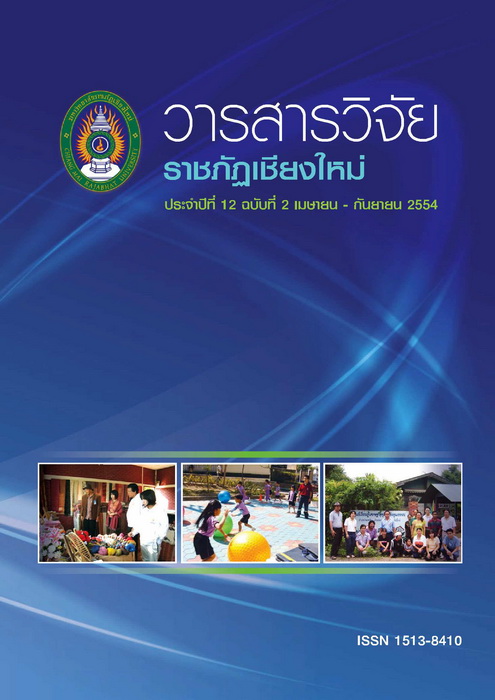ผลการใช้โปรแกรมสร้างเสริมสมรรถภาพทางกายแบบสถานีสำหรับนักเรียนระดับปฐมวัย
DOI:
https://doi.org/10.14456/rcmrj.2011.95991Abstract
บทคัดย่อภาษาไทยไม่สมบูรณ์
Results of Using Circuit Training Physical Fitness Programs for Early Childhood Students
The purposes of this research were 1) to create a circuit training physical fitness program for early childhood students, aged between 5-6 years, 2) to compare the level of physical fitness before and after using the program, and 3) to study the attitudes of early childhood students towards the physical fitness program. The sample group comprised of 34 students in kindergarten grade 3. The research instruments consisted of a circuit training physical fitness program for early childhood students, tests and standard evaluation for physical fitness of Thai preschool children level aged 4-6 years, and affective observation from the early childhood students’ learning by using the circuit training physical fitness program. The data obtained was analyzed by using mean, percentage, standard deviation, and t-test. The findings of this research were as follows: The circuit training physical fitness program for early childhood students was set up, and included the 12 sets of a circuit training physical fitness. This program was checked by experts and was found that the average of congruence index was 0.94 for male and female students’ level of physical fitness after using the circuit training physical fitness program increased significantly on a statistical basis the .01 level for every item. Concerning their body composition, it was more standardized. Regarding the affective domain of the students after learning circuit training physical fitness program, their attention, responsibility, adjustment, discipline and expressions were at good levels.
Downloads
Downloads
How to Cite
Issue
Section
License
1. Articles, information, content, images, etc published in the “Community and Social Development Journal” are copyrighted by the Community and Social Development Journal, Chiang Mai Rajabhat University. In order to properly distribute the articles through print and electronic media, the authors still hold the copyright for the published articles under the Creative Commons Attribution (CC BY) license, which allows the re-distribution of the articles in other sources. References must be made to the articles in the journal. The authors are responsible for requesting permission to reproduce copyrighted content from other sources.
2. The content of the articles appearing in the journal is the direct responsibility of the article authors. The editorial board of the journal does not necessarily agree with or share any responsibility.














